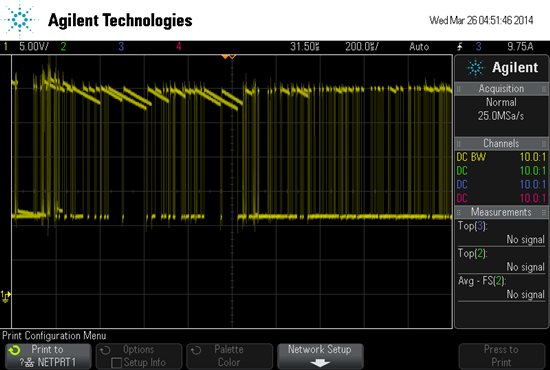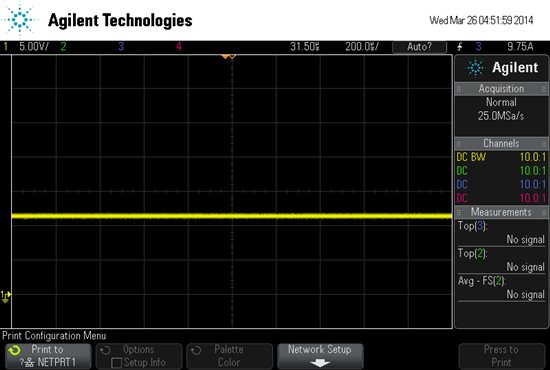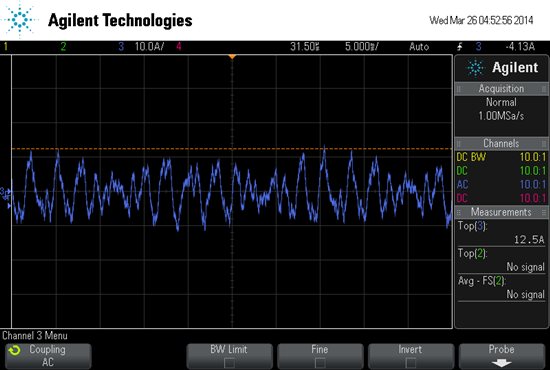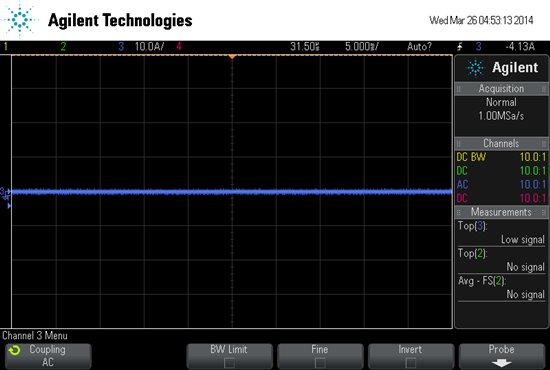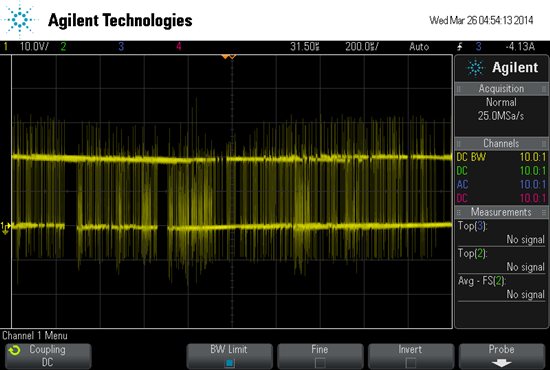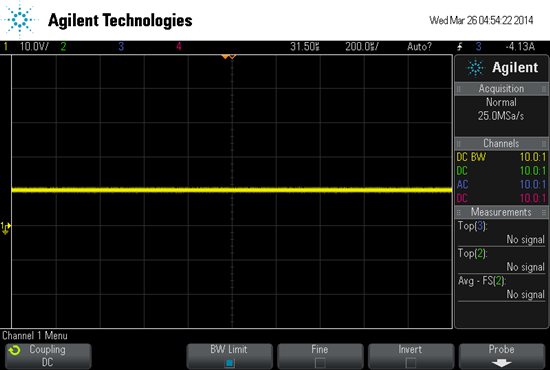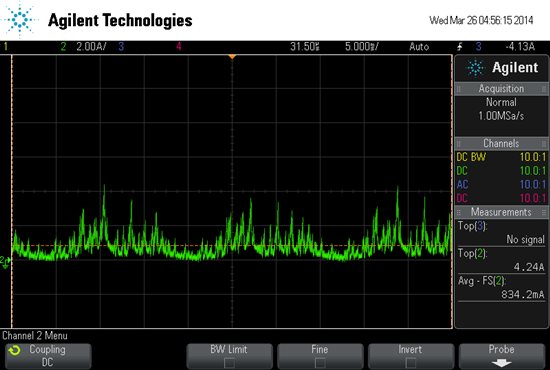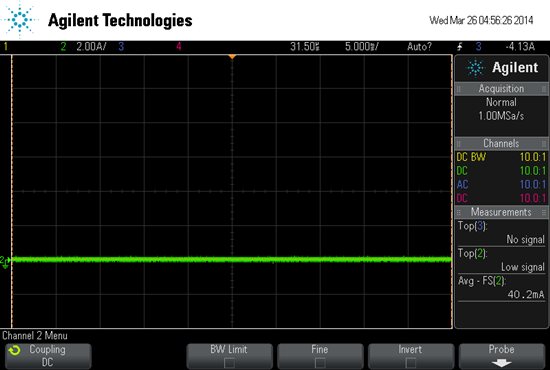I am using the drv 8432 in the parallel mode. I am NOT driving a motor but an inductive coil (L=470 uH and R = 0.4 ohm). I am using this IC to apply a specific voltage pattern to the coil and recycle the reactive power of the coil back to my supply.
i.e. When PWM_A is high and PWM_B is low - current pumped from source to the coil from OUT_A and OUT_B and returning via OUT_C and OUT_D
When PWM_A is low and PWM_B is high - current pumped to source to the coil from OUT_C and OUT_D and returning via OUT_A and OUT_B
Always maintaining them complementary.
I have set the R_adj = 24 ohm (CBC at 10.7A) - My application requires peaks of 18-19A. (Assuming IC will not protest till 20A.)
When I connect only a combination of 2 outputs, i.e A,C or A,D or B,C or B,D, the IC works beautifully and limits the current at 10.5A (expected since there must be error in resistor value). I have observed the current using a current probe.
However when I join A,B and C,D and try to squeeze out anything above 12.5A. the IC goes in OC shutdown NOT CBC. (fault = 0 otw =1) The current probes measured between 6-6.5A in all the outputs before the IC shutdown. There were no stray transients to cause the shutdown.
OC shutdown should not happen in parallel mode. Note: Current is being ramped up gradually so no possibility of the IC interpreting a short current arises.
I have attached a reasonable heat shield and observed that temperatures are below 60 degrees even at 12 A.
I have used inductors in series with all the outputs before directly connecting them. The values are twice that of minimum required as calculated from the data sheet.
How is it possible that an output can sustain 10.5A without any hiccups and cause a OC shutdown at 6A when connected in parallel?
I have a ground plane as recommended and separated the GND and AGND with a1 ohm resistor.
Please advise.
Sincerely,
Rohit Joshi
ECE, Georgia Tech


